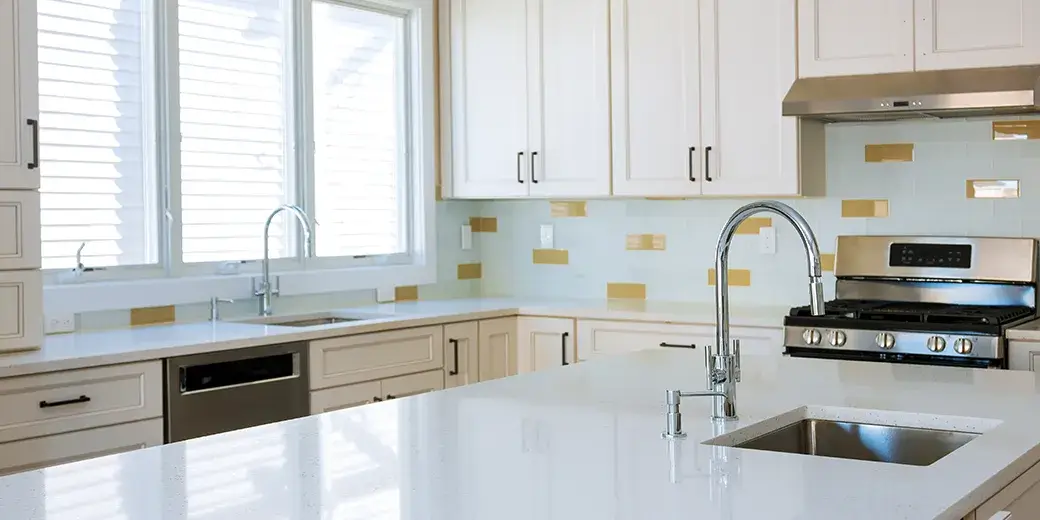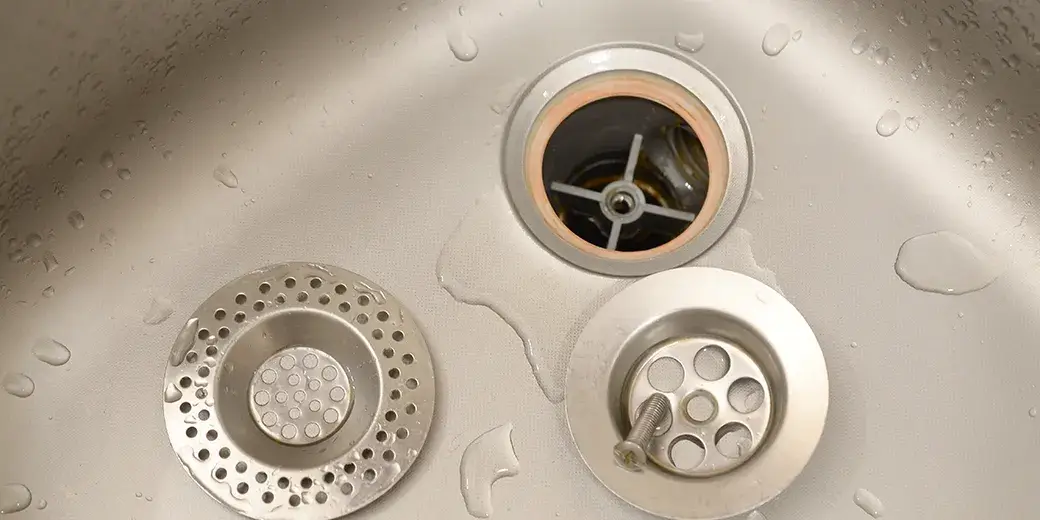Preventative Measures to Avoid a Clogged Kitchen Sink
I. Introduction:
Your kitchen sink is the heart of your home, a hub of activity where you prepare meals, wash dishes, and even socialize with family and friends. However, nothing can disrupt the flow of your daily life quite like a clogged kitchen sink. The frustration of watching water pool up, the unpleasant odors that can arise, and the potential for costly plumbing repairs can turn a once-functional kitchen into a source of stress.
But fret not! In this blog post, we’ll explore the art of prevention, revealing the most effective and practical measures to ensure your kitchen sink remains free from clogs. By understanding the common culprits, practicing mindful usage, and maintaining good habits, you can sidestep the nuisance of a clogged sink, keeping your kitchen running smoothly and your daily routine uninterrupted. Let’s dive into the world of preventive measures to help you avoid the headache of a clogged kitchen sink and enjoy a stress-free cooking and cleaning experience.
II. Understand the Common Causes of Clogs
Understanding the common causes of clogs is the first step in preventing a clogged kitchen sink. By recognizing what typically leads to blockages, you can proactively take measures to avoid these issues. Here are the key aspects of understanding the common causes of clogs:
- Food Particles and Scraps:
- Food particles and scraps are among the most frequent causes of kitchen sink clogs. Items like vegetable peels, fruit seeds, and leftover food can easily accumulate in your drainpipes.
- To prevent clogs, it’s important to scrape off plates and utensils into the trash or a compost bin before washing dishes. Using a sink strainer can help catch small food particles that might otherwise go down the drain.
- Grease and Cooking Oils:
- Grease, fats, and cooking oils are another common culprit. When these substances are poured down the drain, they can congeal and solidify in your pipes over time.
- It’s crucial to avoid pouring grease or oils down the sink. Instead, allow them to cool, then dispose of them in a dedicated grease container or another appropriate receptacle.
- Soap Residue and Mineral Build-Up:
- Soap scum and mineral deposits from hard water can accumulate in your pipes, leading to restricted water flow and eventual clogs.
- Using soap sparingly and opting for low-residue, biodegradable soaps can help reduce soap scum. Additionally, regular cleaning of your sink and drainpipes with specialized cleaners or vinegar can help prevent mineral build-up.
Understanding these common causes of clogs is essential because it allows you to adopt a proactive approach to kitchen sink maintenance. By being aware of what can lead to blockages, you can take steps to minimize the risk and ensure that your kitchen sink remains clog-free. In the following sections of this blog post, we will delve deeper into specific preventive measures and best practices to address each of these common causes effectively.
III. Proper Disposal Techniques
Proper disposal techniques are a crucial aspect of preventing clogs in your kitchen sink. Knowing how to dispose of various materials and substances correctly can significantly reduce the risk of blockages. Here’s a breakdown of proper disposal techniques for some common kitchen waste:
- Food Scraps:
- To prevent food particles from going down the drain, it’s essential to scrape plates and cookware into a trash bin or a composting container.
- Using a sink strainer or drain filter is an effective method for capturing small food scraps that may otherwise slip into the pipes.
- Grease and Cooking Oils:
- Grease, fats, and cooking oils should never be poured down the sink. When hot, they may flow easily, but as they cool, they solidify and can cause significant blockages.
- After cooking, allow grease and oils to cool in the pan, then transfer them to a dedicated container for proper disposal. Many local recycling centers accept used cooking oil for recycling.
- Coffee Grounds and Eggshells:
- Coffee grounds and eggshells can accumulate in the drain, leading to clogs over time. It’s best to avoid flushing them down the sink.
- Dispose of coffee grounds and eggshells in your compost bin or trash. They can be beneficial in composting and can also help reduce odors in your trash.
By following these proper disposal techniques, you can significantly reduce the likelihood of clogs in your kitchen sink. Additionally, adopting environmentally friendly practices such as composting food scraps can not only prevent clogs but also contribute to sustainability by turning waste into valuable compost for your garden.
In the next sections of the blog post, we will explore other preventive measures to maintain a clog-free kitchen sink, including regular maintenance and mindful water usage. These practices will further enhance the efficiency and longevity of your kitchen plumbing.
IV. Regular Maintenance
Regular maintenance is a critical part of preventing clogs in your kitchen sink. By consistently caring for your sink and its associated plumbing, you can proactively address potential issues before they become major problems. Here’s a breakdown of the key aspects of regular maintenance for a clog-free kitchen sink:
- Using a Sink Strainer:
- Sink strainers or drain filters are simple yet effective tools to prevent food particles, debris, and other foreign objects from entering your drain. They can be placed in the sink’s drain opening to catch solid materials.
- Empty the strainer regularly to ensure it continues to capture debris effectively.
- Cleaning the Garbage Disposal:
- If your kitchen sink has a garbage disposal unit, it requires regular maintenance to keep it functioning smoothly.
- Clean the garbage disposal by running ice cubes through it to help dislodge any residue. You can also use citrus peels or a mixture of baking soda and vinegar to eliminate odors and residue.
- Periodic Pipe Cleaning:
- Even with careful disposal and maintenance, some residue and small debris may still accumulate in your drainpipes over time.
- To address this, you can use environmentally friendly drain cleaners or DIY solutions like a mixture of baking soda and vinegar. These can help break down minor clogs and prevent buildup.
Regular maintenance helps ensure the smooth operation of your kitchen sink and reduces the risk of clogs. It’s best to schedule these maintenance tasks on a routine basis to avoid any sudden plumbing issues. Consistency in maintenance not only keeps your sink clog-free but also prolongs the lifespan of your plumbing system.
In the following sections of the blog post, we will also cover mindful water usage and how educating household members about proper sink usage can further contribute to a clog-free kitchen sink. These practices, when combined with regular maintenance, will help you maintain a smoothly functioning kitchen sink for years to come.
V. Mindful Water Usage
Practicing mindful water usage is an essential component of preventing clogs in your kitchen sink and maintaining a smoothly running plumbing system. Here’s an explanation of how being conscious of how you use water can help prevent clogs:
- Running Water While Using the Disposal:
- When using a garbage disposal, it’s important to run cold water simultaneously. Cold water helps solidify any grease or oil residues, allowing the disposal to more effectively break them down. Additionally, water aids in pushing food particles through the pipes.
- Running water for a short time before and after using the disposal can help ensure the smooth flow of waste.
- Avoiding Overloading the Sink:
- Overloading the sink with too many dishes, utensils, or food scraps at once can overwhelm the drainage system. It can also make it easier for food particles to escape the strainer or filter.
- Instead, divide your dishwashing tasks into manageable portions. This not only prevents clogs but also makes the overall process more efficient.
- Using the Right Amount of Water:
- When washing dishes, using an excessive amount of water is not only wasteful but can also contribute to clogs. Too much water can fail to move debris effectively through the pipes.
- Use only as much water as necessary when washing dishes, and use a high-pressure spray or a dishwashing basin if available to minimize water use.
By being mindful of your water usage, you can ensure that water efficiently carries away food particles and other waste, reducing the chances of clogs. The proper use of water when operating the garbage disposal also helps maintain a clean and functional system.
In the following sections of the blog post, we will further explore the importance of educating household members about proper sink usage and how to recognize and address early warning signs of developing clogs. These combined efforts will go a long way in maintaining a clog-free kitchen sink.
VI. Educating Household Members
Recognizing the signs of a developing clog in your kitchen sink is crucial because early detection and intervention can prevent more severe blockages and costly plumbing repairs. Here’s an explanation of common signs that indicate a clog may be forming:
- Slow Drainage:
- One of the earliest signs of a clog is slow drainage. If you notice that the water in your sink is taking longer than usual to drain, it could indicate the beginning of a blockage.
- Pay attention to how quickly the water clears from the sink after you’ve used it, and if you notice a significant change, it’s time to investigate.
- Gurgling Noises:
- Unusual gurgling or bubbling sounds coming from the drain when you’re using the sink can be a sign of trapped air, which often accompanies a clog.
- These noises typically occur when water tries to pass through a partially obstructed pipe.
- Water Backing Up:
- If you turn on the tap and water starts to back up in the sink or even in nearby drains (like the bathroom sink), it’s a clear indication of a clog.
- This symptom suggests that the clog has become more severe and needs immediate attention.
- Unpleasant Odors:
- A persistent foul smell emanating from the drain can be a sign of a clog. Food particles and other debris trapped in the pipes can produce unpleasant odors.
- If you notice strange or unpleasant smells from your sink, it’s an indication that the clog may be rotting or causing bacterial growth.
- Water Pooling in the Sink:
- Water that accumulates in the sink and refuses to drain, even after the faucet is turned off, is a clear sign of a significant clog.
- This situation often requires immediate action, as it can result in messy and unsanitary conditions.
When you notice any of these signs, it’s essential to take action promptly. Delaying addressing a developing clog can lead to more severe blockages and potentially costly plumbing repairs. In the next section of the blog post, we will explore DIY solutions for minor clogs, offering you tips for addressing these issues on your own. However, it’s crucial to know when to seek professional help, which will also be covered in the blog post, especially for more significant or persistent clogs.
VII. Signs of a Developing Clog
Recognizing the signs of a developing clog in your kitchen sink is crucial because early detection and intervention can prevent more severe blockages and costly plumbing repairs. Here’s an explanation of common signs that indicate a clog may be forming:
- Slow Drainage:
- One of the earliest signs of a clog is slow drainage. If you notice that the water in your sink is taking longer than usual to drain, it could indicate the beginning of a blockage.
- Pay attention to how quickly the water clears from the sink after you’ve used it, and if you notice a significant change, it’s time to investigate.
- Gurgling Noises:
- Unusual gurgling or bubbling sounds coming from the drain when you’re using the sink can be a sign of trapped air, which often accompanies a clog.
- These noises typically occur when water tries to pass through a partially obstructed pipe.
- Water Backing Up:
- If you turn on the tap and water starts to back up in the sink or even in nearby drains (like the bathroom sink), it’s a clear indication of a clog.
- This symptom suggests that the clog has become more severe and needs immediate attention.
- Unpleasant Odors:
- A persistent foul smell emanating from the drain can be a sign of a clog. Food particles and other debris trapped in the pipes can produce unpleasant odors.
- If you notice strange or unpleasant smells from your sink, it’s an indication that the clog may be rotting or causing bacterial growth.
- Water Pooling in the Sink:
- Water that accumulates in the sink and refuses to drain, even after the faucet is turned off, is a clear sign of a significant clog.
- This situation often requires immediate action, as it can result in messy and unsanitary conditions.
When you notice any of these signs, it’s essential to take action promptly. Delaying addressing a developing clog can lead to more severe blockages and potentially costly plumbing repairs. In the next section of the blog post, we will explore DIY solutions for minor clogs, offering you tips for addressing these issues on your own. However, it’s crucial to know when to seek professional help, which will also be covered in the blog post, especially for more significant or persistent clogs.
VIII. When to Seek Professional Help
Knowing when to seek professional help for a clogged kitchen sink is essential to prevent further damage and ensure the issue is properly resolved. Here’s an explanation of situations in which you should consider calling a professional plumber:
- Persistent or Severe Clogs:
- If you’ve attempted DIY methods and the clog remains or is particularly stubborn, it’s time to call a professional. This can be an indication of a more significant blockage further down the plumbing system.
- Professionals have the tools and expertise to tackle even the most challenging clogs.
- Recurring Clogs:
- If you experience frequent or recurring clogs in your kitchen sink, it may suggest a structural issue in your plumbing system. Recurring clogs can be a sign of damaged or deteriorating pipes, which need professional assessment and repair.
- A plumber can identify the underlying cause and provide a long-term solution.
- Foul Odors and Unpleasant Smells:
- Persistent foul odors emanating from the sink even after using DIY solutions may indicate a more significant problem, such as a sewage backup or trapped debris deeper in the pipes.
- A professional can diagnose the source of the odor and take appropriate action.
- Multiple Clogged Drains:
- If multiple drains in your home are clogged simultaneously (e.g., both the kitchen and bathroom sinks), it could be a sign of a more significant blockage in the main sewer line.
- In such cases, you should call a professional plumber to assess and address the issue before it affects the entire plumbing system.
- Visible Signs of Damage:
- If you notice visible damage to your plumbing, such as leaks, cracks, or signs of corrosion, it’s crucial to seek professional help. Neglecting these issues can lead to more extensive and costly repairs down the line.
- Inability to Identify the Problem:
- If you’re unsure of the source of the problem or the clog’s location, it’s best to consult a professional plumber. They have the experience and equipment to locate and diagnose plumbing issues accurately.
- Safety Concerns:
- If you’re dealing with harsh chemicals or disassembling pipes, it can pose safety risks. It’s safer to rely on a professional who is trained in handling such situations.
Calling a professional plumber, when necessary, ensures that the issue is resolved effectively and that any underlying problems are addressed. Timely intervention can save you from more extensive damage and costly repairs in the long run, making it a wise investment in the health and longevity of your plumbing system.
IX. Conclusion
In conclusion, a clogged kitchen sink can be a significant inconvenience and expense, but with the right preventative measures, it’s a problem you can easily avoid. By understanding the common causes of clogs, practicing proper disposal techniques, and engaging in regular maintenance, you can keep your kitchen sink running smoothly. Mindful water usage, along with educating all household members about responsible sink practices, contributes to a harmonious and clog-free kitchen environment.
Recognizing early warning signs of developing clogs and knowing when to seek professional help are the final pieces of the puzzle. With these strategies at your disposal, you can keep your kitchen sink clog-free, ensuring that your daily culinary adventures and dishwashing routines remain hassle-free and enjoyable. Remember, a little prevention goes a long way in preserving the heart of your home and the smooth flow of your daily life.
Want a Free Quote?
Contact us today to discuss your needs and get an accurate estimate at no obligation. Planning made easy.
Want a Free Quote?
Contact us today to discuss your needs and get an accurate estimate at no obligation. Planning made easy.
Contact us:



